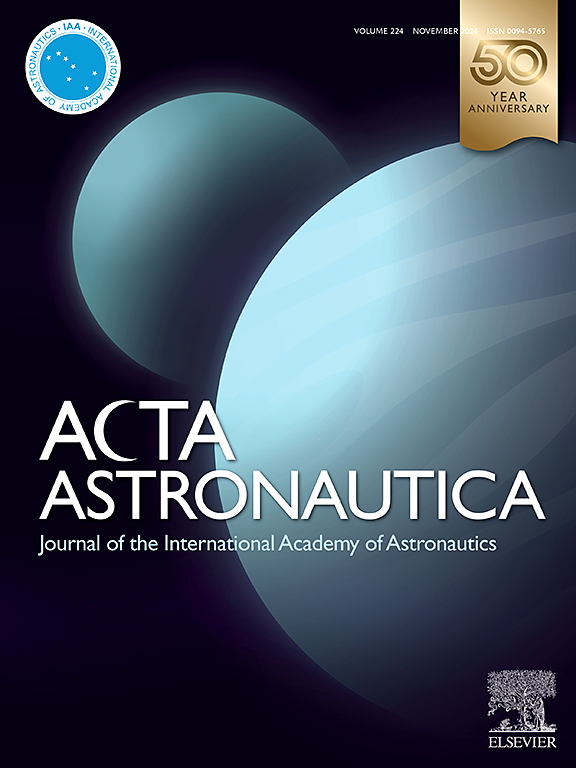Improving efficiency in CubeSat mass production: A modular and standardized approach
IF 3.1
2区 物理与天体物理
Q1 ENGINEERING, AEROSPACE
引用次数: 0
Abstract
Advancements in CubeSat technologies are revolutionizing space research and commercial satellite applications, enabling CubeSats to conduct advanced, complex missions. A key development is the deployment of CubeSat constellations for continuous monitoring, driven by private space firms due to low costs and scalability. As demand for CubeSat constellations grows, standardized design and development processes are crucial for mass production. Traditional CubeSat interfaces, using a stacking arrangement, increase assembly time and costs due to a lack of standardization. Customizing interfaces for specific missions complicates testing and repairs, reducing reliability and flexibility. System complexity in satellite development causes inefficiency, yet the impact on mass CubeSat production remains unassessed, with no established methods to evaluate satellite assembly complexity. To address these issues, this study investigates CubeSat platform interfaces using industrial design tools like design for manufacturing and assembly and advanced complexity analysis. The goal is to develop a modular, flexible platform with a standardized interface to enhance compatibility and reduce costs. This study describes the development and interface standardization process of a 1U structure platform using a slot-type mechanical interface and a backplane-board-type electrical interface for efficient mass production. The concept, previously demonstrated on a 3U CubeSat, employs a unique method for mounting internal subsystems onto the main structural frame, facilitating integration while minimizing structural parts. Important design parameters influencing efficiency are evaluated against conventional designs for suitability in high-demand applications. Evaluation methods are validated with assembly and disassembly tests, resulting in reduced integration time, lower costs, and improved reliability. Assembly tests and environmental testing under launch conditions have shown promising results, ensuring the design can withstand launch loads.
求助全文
约1分钟内获得全文
求助全文
来源期刊

Acta Astronautica
工程技术-工程:宇航
CiteScore
7.20
自引率
22.90%
发文量
599
审稿时长
53 days
期刊介绍:
Acta Astronautica is sponsored by the International Academy of Astronautics. Content is based on original contributions in all fields of basic, engineering, life and social space sciences and of space technology related to:
The peaceful scientific exploration of space,
Its exploitation for human welfare and progress,
Conception, design, development and operation of space-borne and Earth-based systems,
In addition to regular issues, the journal publishes selected proceedings of the annual International Astronautical Congress (IAC), transactions of the IAA and special issues on topics of current interest, such as microgravity, space station technology, geostationary orbits, and space economics. Other subject areas include satellite technology, space transportation and communications, space energy, power and propulsion, astrodynamics, extraterrestrial intelligence and Earth observations.
 求助内容:
求助内容: 应助结果提醒方式:
应助结果提醒方式:


